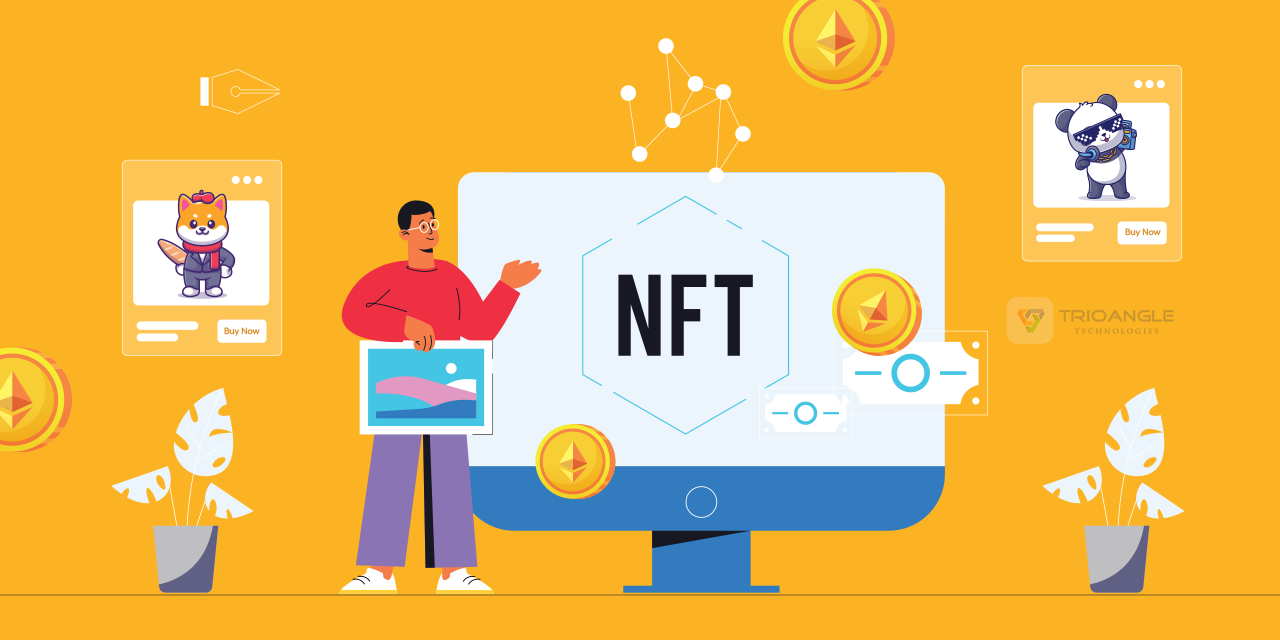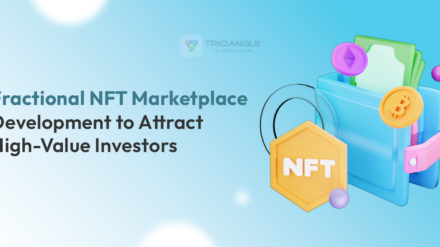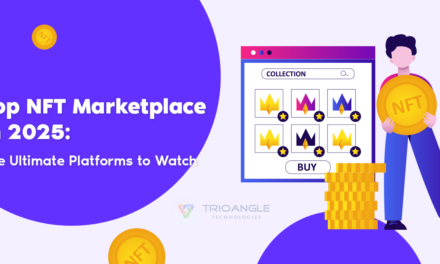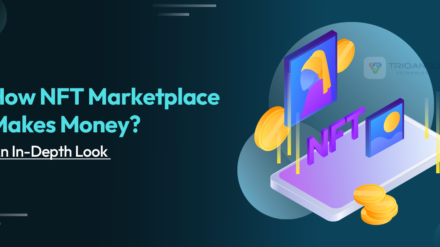An NFT Marketplace is a digital platform that facilitates the buying and selling of unique digital assets known as non-fungible tokens (NFTs). NFTs represent ownership or proof of authenticity of digital items, which can range from digital art, collectibles, music, videos, virtual real estate, and more. Create NFT Marketplace is an essential one.
Users can engage in transactions involving NFTs using cryptocurrencies. While Ethereum remains the dominant cryptocurrency for NFT transactions, other virtual currencies like Bitcoin, Dogecoin, and others are also accepted on various platforms.
Cryptocurrencies can be securely stored in electronic wallets or directly within the marketplace platform itself. These NFT marketplace apps such as OpenSea clone script typically offer high liquidity, robust security measures, and a wide range of opportunities for users to explore and participate in the growing digital asset ecosystem.
Let’s begin!
What is NFT Marketplace?
An NFT, or non-fungible token, represents a distinctive asset that cannot be substituted with any other item. It encompasses a wide array of digital creations, including artwork, music, photographs, sneakers, Twitter posts, and more, all existing solely in digital form.
Typically, all NFT marketplaces operate on blockchain technology, with platforms commonly built on networks like Binance Smart Chain or Ethereum. While concerns about the blockchain sector may unsettle some NFT enthusiasts regarding long-term investments, it’s essential to delve deeper into understanding the mechanics of NFT marketplace applications.
Types of NFT Marketplaces Available
General
The prevailing NFT platforms are general marketplaces, serving as expansive hubs showcasing a wide array of NFTs, from digital art to virtual real estate. Leading names like OpenSea and Rarible dominate this landscape.
Notably, these platforms are experiencing a significant surge in popularity, particularly in regions such as Asia-Pacific and Europe. This uptick often coincides with the burgeoning regional digital art movements and lively gaming communities.
Art-Centric Marketplaces
Marketplaces centered around art specialize in digital art NFTs, catering primarily to artists and collectors. SuperRare and Foundation stand out as prime examples. These platforms hold significant sway over the worldwide digital art landscape, frequently pioneering trends in digital art styles and nurturing collaborations among artists.
Gaming NFT Marketplace
These marketplaces are dedicated to NFTs within the realm of gaming, encompassing in-game items, characters, and virtual real estate. Axie Marketplace (Axie Infinity) and Decentraland are notable representatives.
Especially prevalent in regions with thriving gaming cultures such as South Korea and Japan, these platforms lead the way in blending NFTs with interactive entertainment experiences.
Music/Entertainment
Focused on music and entertainment-related NFTs, these platforms provide access to exclusive content from artists and virtual event tickets. Catalog and Sound.xyz are prominent in this niche, garnering widespread attention, particularly in the U.S. and Europe.
Artists increasingly rely on these platforms for additional revenue streams and novel ways to interact with their fan base.
Sports/Collectibles
Specializing in sports memorabilia and collectibles as NFTs, platforms like NBA Top Shot and Sorare have garnered immense popularity. These marketplaces draw global interest, especially in regions where the featured sports enjoy a dedicated fan base, like basketball in the U.S. and soccer in Europe and Latin America.
Utility/Service Marketplace
These marketplaces provide NFTs with tangible real-world utilities or services, such as event access or memberships. Notable examples encompass VeeFriends and Unlock Protocol. They are experiencing a surge in popularity worldwide as businesses increasingly explore NFTs as avenues for customer engagement and loyalty programs.
Community-Governed Marketplace
Functioning on decentralized networks, these marketplaces frequently employ community governance models, empowering users to shape the platform’s evolution. Examples encompass Zora and Async Art.
This paradigm signifies a transition towards a more democratized and user-centric ethos within the NFT sphere, striking a chord with global audiences who prioritize transparency and community engagement.
Steps to Create NFT Marketplace
You are arriving at an important state. Yes! Core of this blog. There are various steps followed by NFT marketplace development company. They are:
- Discovery of Products
- Define Value Proposition
- Find Target Audiences
- Create User-Flow
- Include Must Have features
- Design MVP Model
Among those, finding the must-have and the nice-to-have features is an essential thing. Let’s look into the top features here.
Nice-to-Have Features in NFT Marketplace
- User Signup
- User Profile
- Multi-Payment
- Create NFT Collection
- List Creation
- Dashboard for Deals
- NFT Buy/Sell
- Collection & NFT Page
- Admin Panel
- Calendar
- Scheduling Event
- Chat/Video Calls
How NFT Marketplace Makes Money?
There are many ways for the NFT marketplace generate revenue. This section coversup those ways in detail.
Transaction Fees
The primary revenue stream for all NFT marketplaces. Typically, buyers incur these fees when transacting on the platform. NFT marketplaces commonly charge a commission ranging from 2 to 5 percent per transaction. For example, OpenSea levies a transaction fee of 2.5 percent on purchases.
Listing Fee
Marketplace owners generate revenue from artists through various fees, including listing, minting, or removing NFTs from the platform. Most NFT platforms charge these fees to cover operational costs and generate income.
Additionally, gas fees on the Ethereum blockchain are determined by the demand for and the timing of transactions. You can monitor the latest gas fees on the Ethereum blockchain through platforms like Etherscan.
Royalties
Numerous marketplaces generate revenue through royalties. When secondary buyers resell their NFTs, a percentage of the profit is allocated to the original artist, and the marketplace also receives a portion of the proceeds from the sale. This mechanism ensures ongoing compensation for creators and sustains the marketplace’s financial health.
Commission
Certain marketplaces earn commissions from their sellers, with SuperRare being a prime example. They charge a 15% commission from sellers on the initial sale.
However, for subsequent sales, they allocate 10% to the original artist and 90% to the resellers. This approach ensures ongoing support for artists while incentivizing participation in the marketplace.
Getting Started With Trioangle
In summary, the NFT Marketplace serves as a digital platform for trading unique digital assets. There are two primary types: universal and niche, each self-explanatory in its focus. The NFT market is currently experiencing significant hype, presenting both challenges and opportunities. Building an NFT marketplace is among the promising opportunities emerging from this trend.
If you have a concept for an NFT marketplace but lack the necessary expertise or a professional NFT marketplace development company at your service. With seven years of experience in developing software products of various complexities and types, We possess the expertise to transform your idea into an exceptional product that resonates with users. Feel free to reach out to us to share your NFT product idea or if you have any remaining questions.





